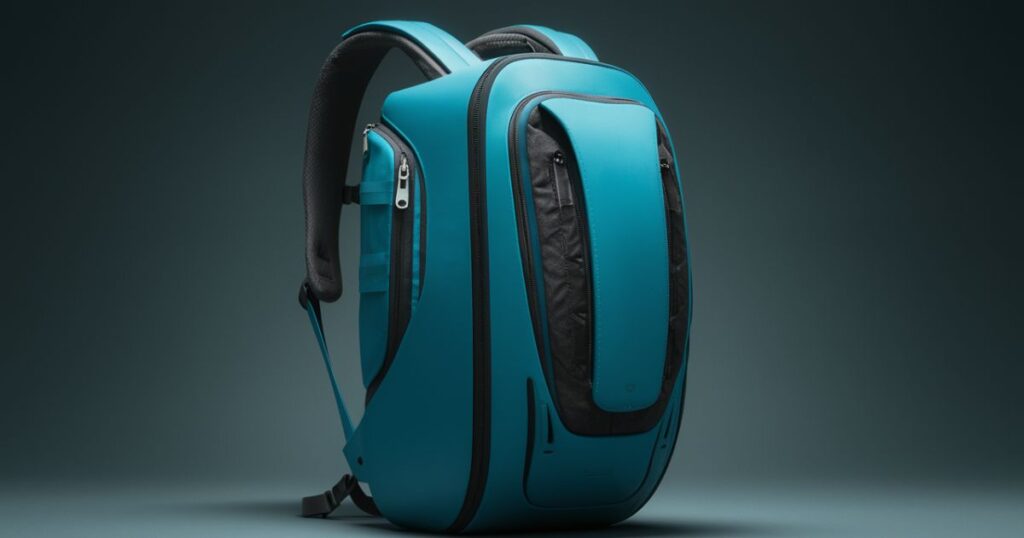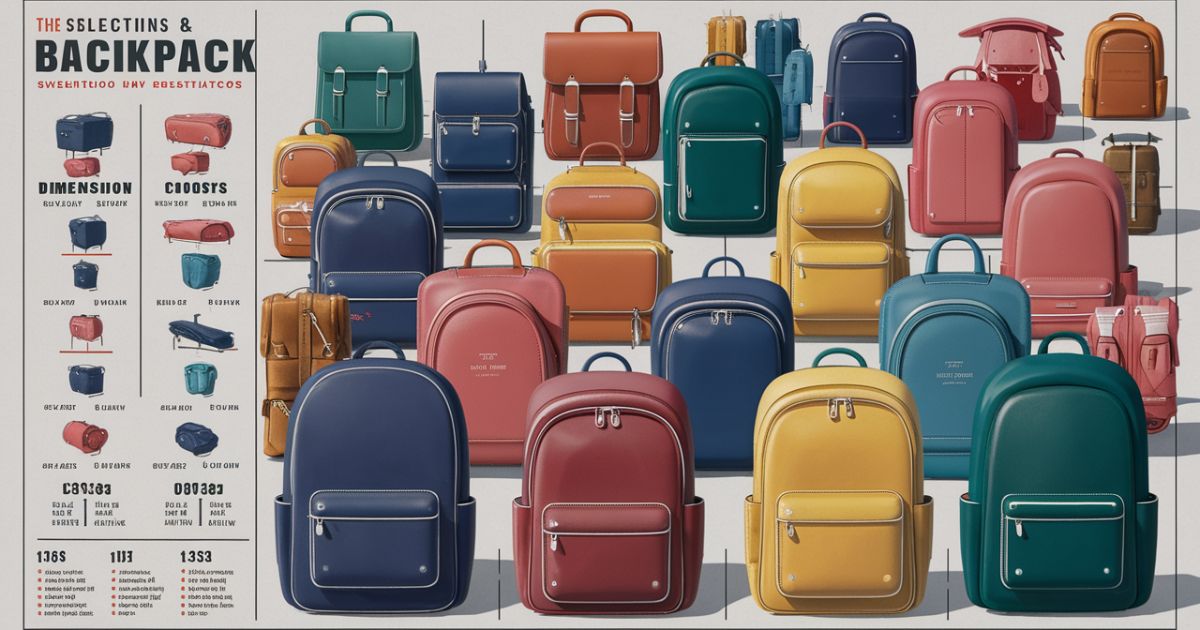Ever stood in the backpack aisle, overwhelmed by the endless options and numbers representing volumes in liters? You’re not alone! Choosing the right backpack size can feel like a daunting task, especially when you’re gearing up for your next big adventure.
But fear not, fellow explorer! This comprehensive guide will demystify the world of backpack sizes and volumes, equipping you with the knowledge to confidently select the perfect pack for your journey.
Understanding backpack sizes is crucial for several reasons. First and foremost, it ensures your comfort on the trail or during travel. Lugging around an overstuffed or undersized pack can quickly turn your dream trip into a nightmare of aching shoulders and regret.
Secondly, having the appropriate backpack volume allows you to fit all your essential gear without compromising on space or weight. And let’s not forget about those pesky airline restrictions – choosing a carry-on friendly travel backpack can save you from hefty checked bag fees and the stress of lost luggage.
Decoding Backpack Size: Liters vs. Cubic Inches
Unlike regular luggage, which is typically measured by dimensions, backpack sizes are determined by their carrying capacity. This capacity can be expressed in liters or cubic inches, and it’s important to understand the difference between these two units of measurement.
During a recent visit to my local outdoor outfitter, I witnessed a confused customer struggling to grasp the concept of liter backpacks. The salesperson patiently explained that 1 liter is equivalent to approximately 61 cubic inches. As a visual aid, they pointed to a standard Nalgene water bottle, which conveniently holds 1 liter (or 61 cubic inches) of liquid.
So, if a backpack size is listed as 50 liters, you can envision it as having the capacity to hold 50 Nalgene bottles worth of gear. Nifty, right?
UnitConversion1 Liter≈ 61 Cubic Inches
While some brands may still use cubic inches for their backpack volume measurements, liters have become the more common and universally accepted unit in the outdoor industry.
Backpack Size Categories: From Daypacks to Expedition Packs
Now that you’ve got a handle on the units of measurement, let’s dive into the different backpack size categories and their typical uses. Here’s a quick rundown:
- 0-10 Liters: The Essentialist (Daypack)
- Perfect for trail runs, short day hikes, or carrying just the bare necessities like water, snacks, and a light layer.
- Remember that time you overpacked for a simple day hike and regretted every step? A compact daypack prevents that mistake.
- 10-30 Liters: The Transient Traveler (Overnight Trips or Extended Day Hikes)
- Ideal for overnight camping adventures or extended day hikes that require extra food, water, and gear like rock climbing equipment or a puffy jacket.
- This backpack size range is also suitable for a quick weekend getaway or a minimalist overnight trip in warm, dry weather.
- 30-50 Liters: Expedition Edition (Ultralight Thru-Hike, Weekend Trip, or International Travel)
- The sweet spot for weekend warriors embarking on a multi-day backpacking trip or an ultralight thru-hike.
- This backpack volume can comfortably accommodate your sleeping bag, tent, cook system, and other essential hiking gear for trips up to 5 or 6 days.
- Many seasoned travelers also prefer this size range for international adventures, as it meets most airlines’ carry-on requirements (more on that later!).
- 50-70 Liters: Going Off The Grid (Multi-Day Backpacking)
- When you’re ready to truly disconnect and immerse yourself in nature for an extended period, this backpack size range is your go-to companion.
- With ample room for food, water, and any luxury items you might want to bring (like a camping pillow or that novel you’ve been meaning to read), these packs are perfect for multi-day backpacking trips or extended overnight camping excursions.
- 70+ Liters: Pathfinder (Winter Multi-Day Trip or Hiking Guide)
- At first glance, a pack larger than 70 liters might seem excessive, but trust us, there are valid reasons for this behemoth backpack volume.
- If you’re planning a winter adventure or winter backpacking trip, you’ll need to accommodate bulkier cold weather camping gear and clothing, which can quickly eat up space.
- Hiking guides or those leading group trips may also require this size to carry extra safety equipment and supplies for their companions.
Remember, these size ranges are just general guidelines. The most important factor is choosing a backpack size that aligns with your specific needs, gear, and trip duration.
Choosing the Right Backpack Size for Your Adventure
Now that you’ve got a solid understanding of the different backpack size categories, it’s time to zero in on the perfect pack for your upcoming adventure. Here are a few key considerations:
- Trip Length: Are you planning a multi-week expedition or a quick weekend getaway? The duration of your trip will significantly impact the amount of gear and supplies you’ll need to carry, thus influencing your ideal backpack volume.
- Gear and Essentials: Make a list of all the gear you’ll be bringing, from your sleeping bag and tent to your cooking system and extra layers. Don’t forget to account for consumables like food and water, too. This will give you a better idea of the backpack capacity you’ll require.
- Weight Willingness: Be honest with yourself about how much weight you’re willing (and able) to carry on your back for extended periods. A larger backpack size might be tempting, but remember, every extra item adds up in terms of overall load.
- Climate and Activities: If you’re heading to a colder region or planning activities that require specialized gear (like climbing or fishing), you’ll likely need a larger backpack volume to accommodate the bulkier and additional items.
One of my most valuable lessons came from personal experience. On my first multi-day backpacking trip, I overpacked and ended up with a massive pack that weighed me down and caused constant discomfort. After that initial mistake, I learned to pack smarter and prioritize a backpack size that struck the perfect balance between capacity and comfort.
Regardless of your chosen backpack volume, it’s crucial to try on different packs with weight before making your final decision. Load them up with a few sandbags or your actual gear, and walk around the store or your home. This simulation will help you gauge how the pack feels when fully loaded and whether the backpack fit is comfortable for your body type and intended use.
The Ultimate Travel Backpack Size

While backpack sizes are essential for outdoor adventures, they’re also a game-changer for international travel. Many seasoned globetrotters have ditched traditional luggage in favor of a versatile and convenient travel backpack. Not only does this allow for easier mobility and hands-free transportation, but it also enables you to avoid those dreaded checked bag fees and the stress of lost luggage.
But what is the ideal backpack size for international travel? The golden rule is to opt for a pack that meets most airlines’ carry-on restrictions. While specific guidelines can vary, the standard carry-on size allowed is typically around 22 inches x 14 inches x 9 inches or 45 linear inches (length + width + height).
Converting these dimensions to backpack volume, you’ll find that a pack around 45 liters is generally considered carry-on friendly. This backpack size provides ample space for your clothes, toiletries, and other travel essentials while still fitting snugly in the overhead bin or under the seat in front of you.
It’s always a good idea to double-check the specific airline carry-on restrictions for your flight, especially if you’re flying with budget carriers known for strict enforcement (we’re looking at you, Spirit and Ryanair!).
Bonus Tips for Finding Your Backpack Soulmate
Beyond just backpack sizes and volumes, there are a few additional factors to consider when selecting your perfect pack companion:
- Proper Fit: Just like a well-fitting pair of hiking boots, a properly fitted backpack can make all the difference in preventing discomfort, pain, and potential injury on the trail. Many brands offer gender-specific packs designed to accommodate different body shapes and hip sizes.
Don’t dismiss a pack solely based on its gender label. The most important factor is finding one that fits your unique build and distributes weight evenly across your hips and shoulders.
Pro Tip: Visit an experienced outfitter and have a professional help you try on different packs with weight. They can make adjustments to the hip belt, load lifters, and torso length to ensure a customized fit that will keep you comfortable mile after mile. - Features and Functionality: Depending on your intended use, you’ll want to look for specific features that cater to your needs. For example, if you’re an ultralight thru-hiker, you might prioritize a minimalist pack with fewer bells and whistles to shave off extra weight. On the other hand, if you’re planning a multi-day backpacking trip, you’ll likely appreciate features like a built-in rain cover, ample external attachment points, and a comfortable hip belt for heavy loads.
- Resupply Strategy: If you’re embarking on a long-distance thru-hike or an extended backpacking adventure, consider your resupply strategy. Will you be mailing yourself food and gear along the way, or will you need to carry everything from the start? This could impact the backpack volume you require, as you may be able to get away with a smaller pack if you plan to resupply frequently.
- Brand Reputation and Durability: While it’s tempting to opt for a budget-friendly option, remember that your backpack will be your trusty companion through thick and thin. Investing in a high-quality, reputable brand known for its durability and craftsmanship can save you from costly replacements and frustrations down the line.
Conclusion
Choosing the right backpack size and volume is an essential step in ensuring a comfortable and enjoyable adventure, whether you’re embarking on a multi-day backpacking trip, a thru-hike, or an international escapade. By understanding the different capacity ranges, considering your specific needs, and prioritizing a proper fit, you’ll be well on your way to finding your backpack soulmate.











